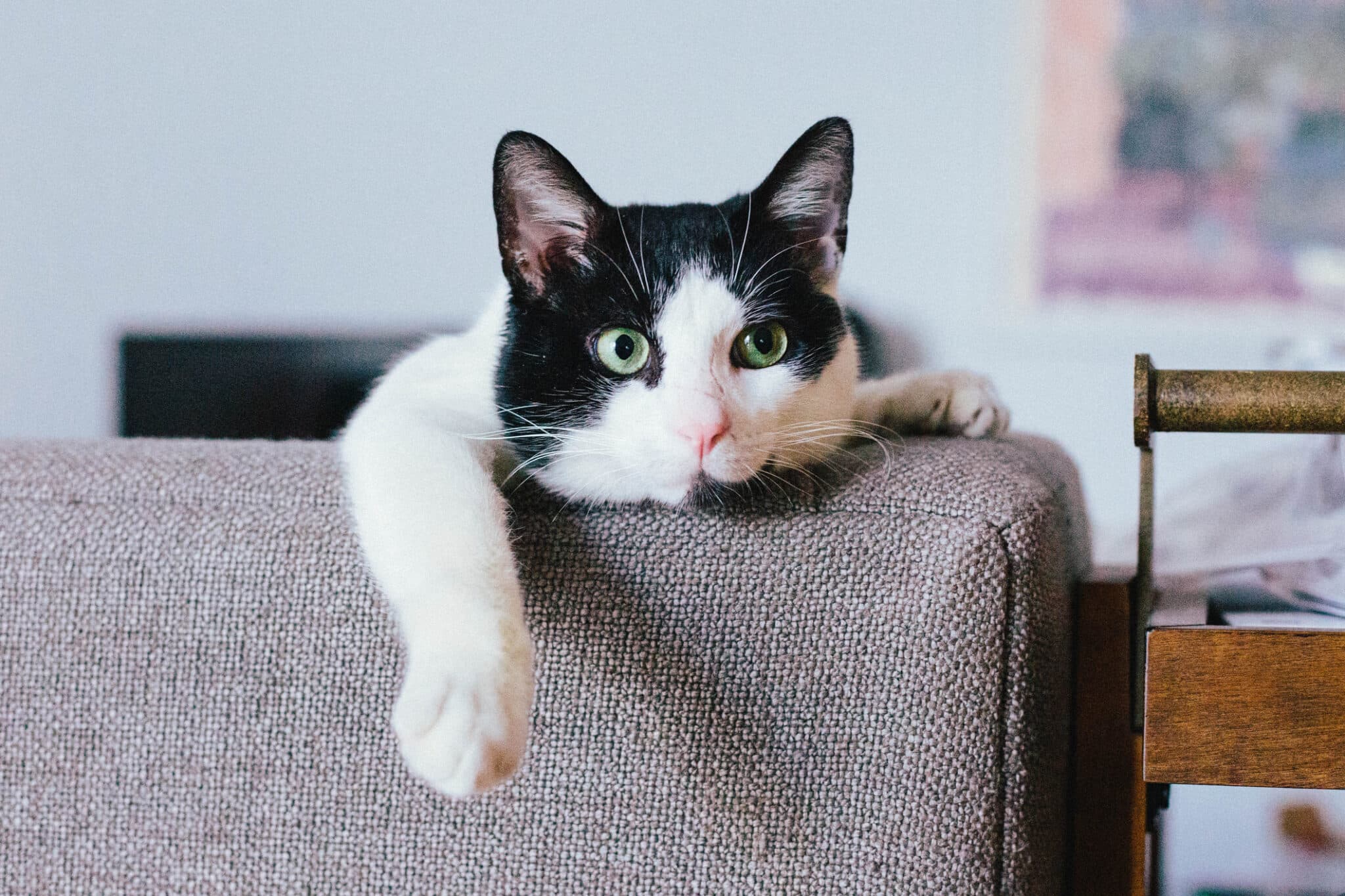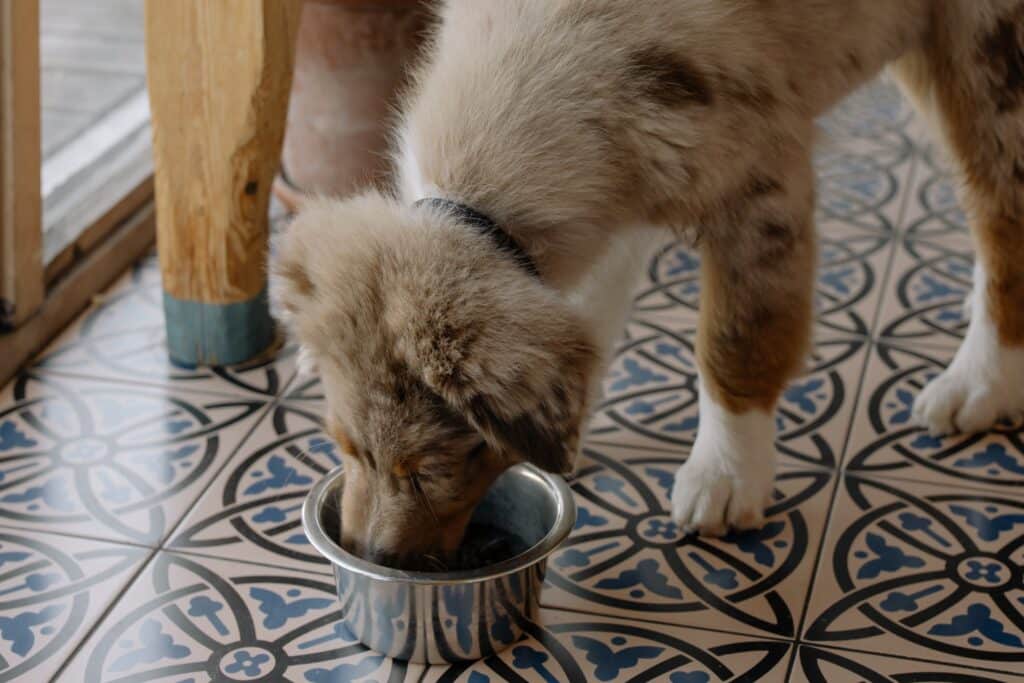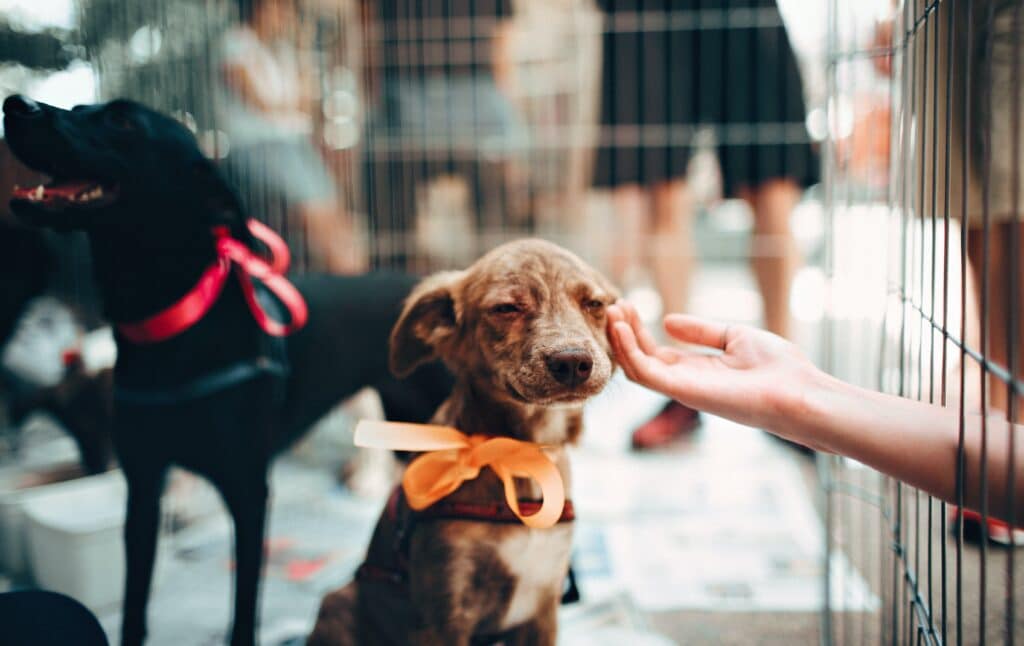8 Ways to Lower Your Pet’s Environmental Pawprint

 Why you can trust us
Why you can trust us
Founded in 2005 as an Ohio-based environmental newspaper, EcoWatch is a digital platform dedicated to publishing quality, science-based content on environmental issues, causes, and solutions.
We’re a country of pet lovers. Ninety and a half million families – or 70% of American households – own a pet, according to the American Pet Products Association. One hundred and thirty-five million cats and dogs live in our homes, and many more amphibians, fish, birds, rodents, and reptiles bring joy to our lives.
We love our furry (or hairy, or feathery) friends and family, but, like us, their needs have an impact on the environment. Here are a few ways to lessen the environmental pawprint of your animal companions.
1. Chow Down Sustainably

Many of us turn to our dietary choices as a way to lower our personal carbon footprint. When 14.5% of all greenhouse gas emissions come from meat production, choosing to cut out meat or dairy is one of the most significant lifestyle changes we can make for the environment. But what about our pets?
Of all meat-derived calories in the U.S., about a quarter are consumed by cats and dogs; if they were a country, they would rank fifth in meat consumption (and first in cuteness). Meat-based pet food is responsible for 64 million tons of greenhouse gases ever year, which is equivalent to the yearly emissions of 13 million cars, according to UCLA geographer Gregory Okin. Luckily, it’s possible to take our pets along on our own plant-based journey.
Dogs are natural scavengers and have evolved to eat an omnivorous diet, meaning they can healthily transition to a well-balanced, well-planned vegetarian (or even vegan) lifestyle. After researching your breed’s needs and consulting with a pet nutritionist, you might consider switching to plant-based pet foods and slowly incorporating them into your current feeding routine, eventually fully replacing meat-based meals.
Concern about protein intake is a common reason for rejecting a plant-based diet (both human and canine). But, while canines do need protein in their diet, Dr. Jennifer Coates determined that proper vegan and vegetarian dog diets have adequate protein and amino acid concentrations (the building blocks for the body to create its own proteins). Pet owners can choose food with lower levels of animal protein and more plant-based protein alternatives (it’s also worth noting that humans can easily obtain all the protein we need from plant-based sources).
Among the companies exploring these alternative plant-based sources of protein, Wild Earth is using marine algae, yeast (which actually has more protein than steak), and an umami-flavored fungus called Koji in their products. Chippin is taking another approach. The company is deriving protein from crickets, which millions of people – many of whom live in East Asian countries – rely on as a protein source.
If vegan- or vegetarianism isn’t an option for your pooch, choose lower-impact meat, like chicken instead of beef. Some pet food also uses by-products of animal agriculture that would otherwise be wasted, like organ meat or bone meal.
Unlike dogs, cats are “obligate carnivores,” and cannot produce certain proteins – like taurine – themselves, so they need to absorb it from fish, beef, chicken, and other meat. It isn’t healthy to modify their diet to exclude meat, but cat owners can opt for pet food brands that have higher animal welfare standards or use only MSC-certified fish.
For all pets (not just dogs and cats!), choose food packaged in recyclable containers, or buy in bulk to reduce plastic waste and Terracycle non-recyclable packaging. If you’re really dedicated, try cooking simple meals and treats for your pets at home.
2. Non-Toxic Grooming and Pest Prevention
The unnatural dyes, sulfates, parabens, triclosan, phthalates, and synthetic fragrances that we avoid in our own body products are also prevalent in those of our pets. Many of these unnatural additives end up in waterways and cause harm to wildlife down steam.
Be wary of greenwashing on pet products – like we are when choosing our own shampoo and deodorant – and do some research on which products are best for your animal. For dogs, try Castle Baths, or Ethique shampoo, conditioner, and soap bars for minimal waste. For cats and dogs alike, try Wysong at bath time, and products from Chagrin Valley Soap & Salve Company for all kinds of furry pets from ferrets to guinea pigs.
For preventing pests, start with basic nontoxic measures: frequent baths in hot water, grooming, and vacuuming your home regularly. When more serious measures are necessary, avoid flea collars that contain the pesticides tetrachlorvinphos, propoxur, permethrin and amitraz. Nontoxic products – like Pest Peeve Flea Prevention – are safer for the environment, your pet, and young children in your household. Check out the NRDC’s directory of better flea and tick products.
3. Take Care of Business
It’s estimated that poop from pets every year is equivalent to the total waste of Maryland – but, if you take care to dispose of it properly, its impact can be minimized.
When buying cat litter, read the ingredient labels to avoid sodium bentonite clay, which is often obtained by strip mining that causes soil erosion and groundwater contamination. Shredded newspaper, sawdust, or other compostable material also work in place of typical litter. However, don’t flush cat poo down the toilet, warns the NRDC, unless they are a strictly indoor pet that has tested negative for toxoplasmosis. While it seems like a better solution to tossing waste in the trash, sewage systems aren’t designed to treat the parasites unique to cat waste.
Along with being an unwelcome sight on the sidewalk, dog poop also carries pathogens and nutrients, which, when waste is left uncollected, get into waterways and cause explosive growth of smelly algae. Always carry bags when out for a walk to collect and properly dispose of waste. Like compostable dishware, biodegradable poop bags are well-intentioned, but will not decompose in a sealed landfill without oxygen. Instead of shelling out for those little green sacks, use plastic bags you already accumulate from newspapers and produce, or search for bags made of alternative materials to plastic, like vegetable starches.
Waste from meat-eating pets can’t go in the compost – much the way meat scraps from your kitchen can’t – so dog poop shouldn’t be left to break down in the yard. The EPA does say that pet owners can flush un-bagged dog poop down the toilet, or bury it in the yard far from your home and garden and at least 12 inches below the surface. Otherwise, toss it in the trash, unless you live in a city that has organized pet-waste compost programs, like San Francisco.
Rabbits, birds, guinea pigs, and other small herbivorous pets have harmless poo that can be added to your compost pile without worry, as long as their bedding is compostable as well.
4. Get Crafty with Toys

After dropping a hundred dollars on a new cat tree, you might find that your feline friend is more interested in the cardboard box it came in. It’s important to keep pets active and entertained, but they certainly won’t notice the difference if you make some of their toys yourself! Fashion a pull toy for dogs out of knotted old tee-shirts, a crinkly chew toy from a water bottle stuffed in an old sock, or get crafty and try sewing your own toys out of fabric from old clothing and blankets.
When purchasing new toys, look for sustainable brands and products made of recycled or recyclable materials, like these fun balls for small rabbits, chinchillas, and guinea pigs to gnaw on.
5. Shop Used
Pets require all kinds of gear: clothes, shoes, tanks, cages, lights, elaborate indoor habitats, and so on. According to Pet Keen, Americans spent $490 million on Halloween costumes for their pets. Instead of purchasing all of these things new, you might be able to save some resources and money by shopping used. Search yard sales, thrift stores, and online marketplaces like Facebook Marketplace, Mercari, and eBay for whatever you need, and pass down your own unwanted items to shelters and friends.
6. Be Wary of Wildlife
If your dog is known to chase squirrels and rabbits, keep them on their leash around wildlife to avoid any tragic encounters.
Cats, however, are the main culprit when it comes to animal attacks. They might be cute and cuddly inside, but they are built to hunt, as we can see that when they practice their skills on the red lasers we use at playtime.
Cats kill approximately 2.4 billion birds and 12.3 billion mammals every year according to the American Bird Conservancy, and are directly responsible for the extinction of 33 bird species. Compare these numbers against the 700,000 annual bird deaths attributed to wind turbines and 25.5 million to power lines, and it’s clear why the International Union for Conservation of Nature listed cats as one of the world’s worst non-native invasive species.
To prevent these deaths and the upset of our global ecosystems, it’s best to keep cats indoors. Our companions might descend from outdoor wild cats, but domestication has dramatically increased their numbers, making their presence outdoors unnatural and dangerous. To give your cat access to the outdoors, build a screened-in “catio,” or leash up and bring them out for a walk (or, more likely, a sit).
If you do choose to let your cat roam outdoors, don’t let them out at dawn and dusk when wildlife is most active, and tie a bell to their collar so wildlife can be warned of their approach. A 2013 experiment by avian ecologist Susan Willson found that cats killed 19x fewer birds in the spring with a bell-laden collar.
7. Adopt, Don’t Shop

Thinking of adding a companion to your family? There are so many animals in need of loving, caring owners. According to the Humane Society, between 6 and 8 million dogs and cats enter shelters in the U.S. every year, only half of which are ever adopted. Purchasing from a breeder will only contribute to the pet overpopulation problem, especially when many pets need loving homes. Many animals from breeding facilities also suffer health problems, or are subjected to unhealthy living conditions in the name of profit.
8. Spay and Neuter
Spaying and neutering pets not only helps reduce pet overpopulation, but also extends the lives of many animals. Male dogs that have been altered live between 18% and 23% longer, and cats between 39% to 62%, according to the Humane Society. They’re also less likely to develop certain cancers and exhibit aggressive behavior.
Linnea graduated from Skidmore College in 2019 with a Bachelor’s degree in English and Environmental Studies, and now lives in Brooklyn, New York. Along with her most recent position at Hunger Free America, she has interned with the Sierra Club in Washington, DC., Saratoga Living Magazine, and Philadelphia’s NPR Member Station, WHYY.
Subscribe to get exclusive updates in our daily newsletter!
By signing up, you agree to the Terms of Use and Privacy Policy & to receive electronic communications from EcoWatch Media Group, which may include marketing promotions, advertisements and sponsored content.

 233k
233k  41k
41k  Subscribe
Subscribe 



